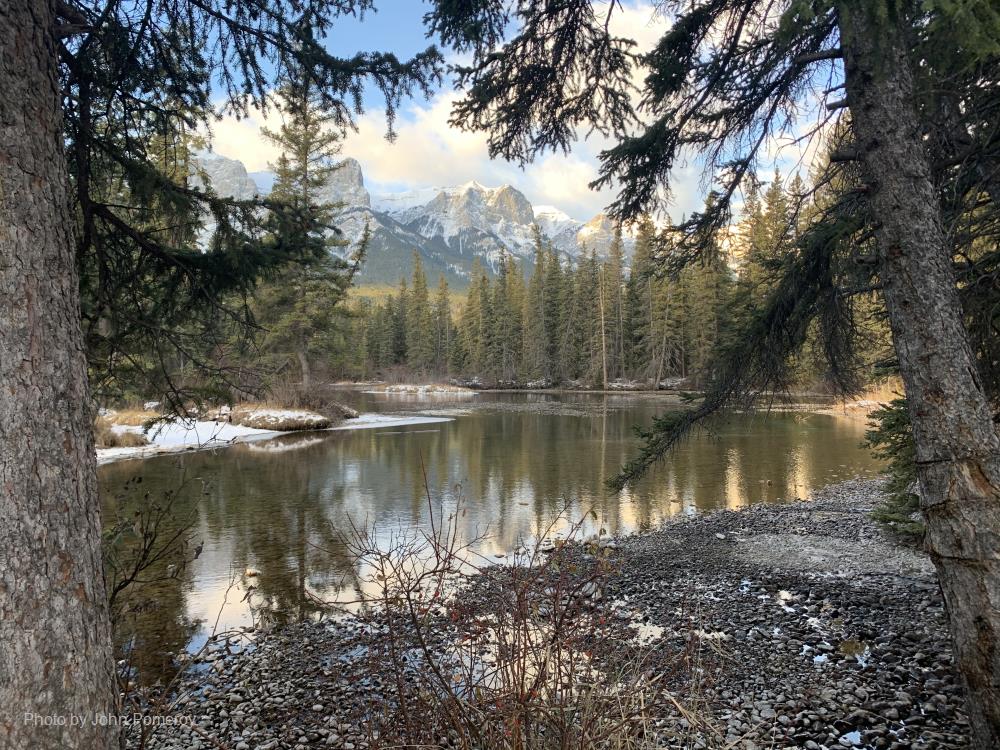
Related items loading ...
Section 1: Overview
Name of Research Project
|
Related Project
|
Part
|
|
GWF-NWF: Northern Water Futures
|
|
|
|
|
|
|
|
Program Affiliations
Related Research Project(s)
|
GWF-NWF: Northern Water Futures | |
Dataset Title
Forest recensus and environmental data for Scotty Creek ForestGEO plot
Additional Information
The Forest Global Earth Observatory (ForestGEO) is a global network of forest research sites used for long-term studies of the world's forests.
Creators and Contributors
|
Jennifer Baltzer | PI | jbaltzer@wlu.ca | Wilfrid Laurier University |
Katherine Dearborn | Originator | | Wilfrid Laurier University |
Cory Wallace | Originator | | Wilfrid Laurier University |
Rajit Patankar | Originator | | Wilfrid Laurier University |
Abstract
Boreal peatlands are frequently underlain by permafrost, which is thawing rapidly. A common ecological response to thaw is the conversion of raised forested plateaus to treeless wetlands, but unexplained spatial variation in responses, combined with a lack of stand-level data, make it difficult to predict future trajectories of boreal forest composition and structure. We sought to characterize patterns and identify drivers of forest structure, composition, mortality, and recruitment in a boreal peatland experiencing permafrost thaw. To do this, we established a large (10 ha) permanent forest plot (completed in 2014), located in the Northwest Territories, Canada, that includes 40,584 mapped and measured trees. In 2018, we conducted a comprehensive mortality and recruitment recensus. We also measured frost table depth, soil moisture, soil humification, and organic layer thickness within the plot between 2012 and 2018, and used habitat association tests to link these variables to forest characteristics and dynamics. Forest composition and structure varied markedly throughout the plot and were strongly governed by patterns in permafrost presence and organic layer thickness. Overall, there was a net loss of trees from the plot at a rate of 0.7% yr-1. Mortality of black spruce, the dominant tree species, was more than double that of recruitment and was strongly associated with permafrost thaw. In contrast, recruitment of larch was over four times greater than mortality, and occurred primarily in low-lying, permafrost-free wetlands with mineral soil near the surface. The trends in tree demography and underlying drivers suggest that spruce-dominated permafrost plateaus will be converted into larch-dominated wetlands as permafrost thaw progresses in boreal peatlands, particularly in areas where mineral soil is near the surface. In the longer term, thaw could increase the hydrologic connectivity of the landscape, resulting in widespread drainage and re-vegetation by spruce, but we did not find evidence that this is occurring yet. Given the increasing rates of permafrost thaw, and positive feedbacks between thaw and forest change, we predict that larch abundance will continue to increase in boreal peatlands over the coming decades, leading to shifts in ecosystem function, wildlife habitat, albedo, and snow dynamics.
Purpose
This data was collected to characterize patterns and identify drivers of forest structure, composition, mortality, and recruitment in a boreal peatland experiencing permafrost thaw.
Plain Language Summary
Keywords
|
Forest structure |
Boreal peatland |
Permafrost |
Scotty Creek |
Northwest Territories |
Citations
Baltzer, Jennifer; Patankar, Rajit; Dearborn, Katherine; Wallace, Cory A. (2021), Permafrost thaw in boreal peatlands is rapidly altering forest community composition, Dryad, Dataset,
https://doi.org/10.5061/dryad.0cfxpnw0p
Section 3: Status and Provenance
Dataset Version
1
Dataset Creation Date
Status of data collection/production
Dataset Completion or Abandonment Date
2021-03-17
Data Update Frequency
Creation Software
Primary Source of Data
Other Source of Data (if applicable)
Data Lineage (if applicable). Please include versions (e.g., input and forcing data, models, and coupling modules; instrument measurements; surveys; sample collections; etc.)
Section 4: Access and Downloads
Access to the Dataset
Terms of Use
This work is licensed under a CC0 1.0 Universal (CC0 1.0) Public Domain Dedication license
Does the data have access restrictions?
Downloading and Characteristics of the Dataset
Download Links and Instructions
Total Size of all Dataset Files (GB)
File formats and online databases
Other Data Formats (if applicable)
List of Parameters and Variables
|
Organic layer thickness | cm | | Field collected samples, Field observation |
Frost table depth | cm | | Field collected samples, Field observation |
Humification Index | | | Field collected samples |
Soil moisture | % | | Field collected samples |


 GWFNet
GWFNet Master
Master Data
Data Research
Research Map
Map
 Advanced
Advanced . . .
. . .

 Metadata Editor
Metadata Editor
 Record List
Record List
 Alias List Editor
Alias List Editor
 Legacy sites
Legacy sites